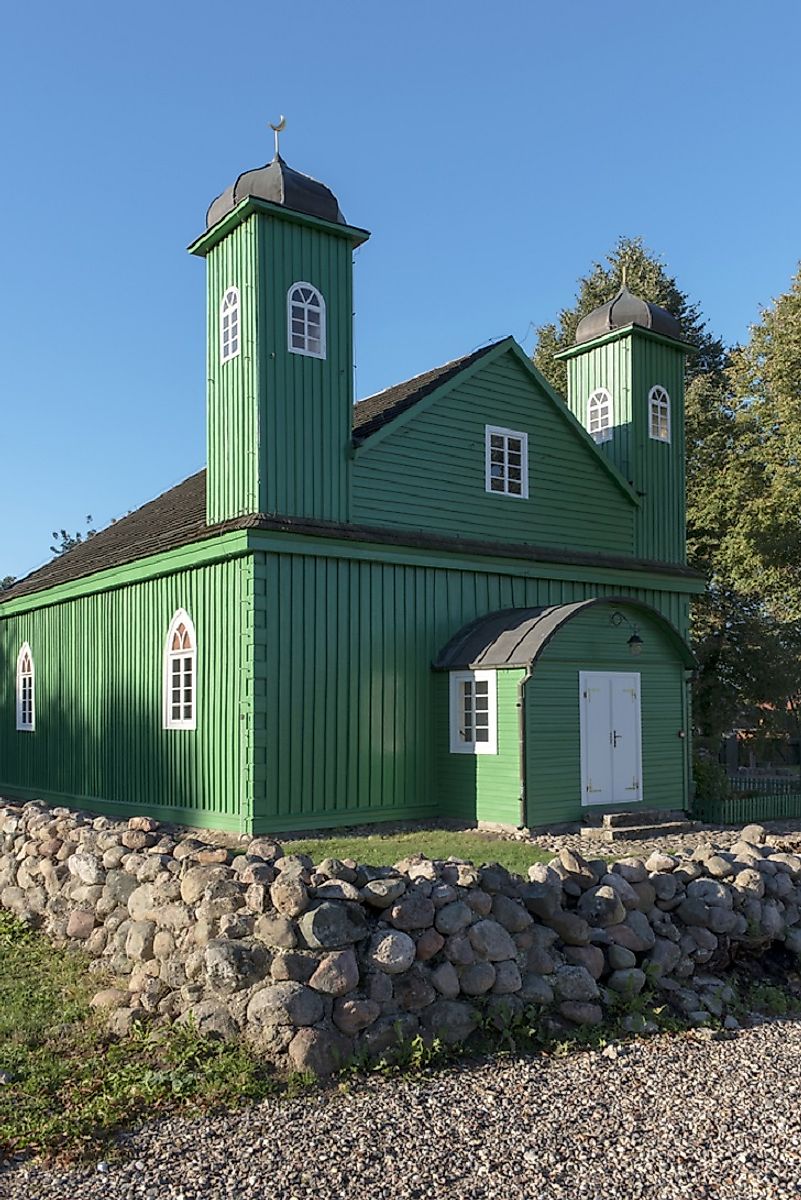Tartar Culture: Peoples Of The World

5. Description
Tartar origins go back to the nomadic tribes of north-eastern Mongolia and the area around Russia's Lake Bailkal in the Fifth Century BC. Unlike the neighboring Mongols, they spoke a Turkic language, and may have been related to the Asiatic Cuman peoples who would also settle in Eastern and Central Europe. Today there are almost 7 million Tartars living in ethnic homelands such as Tatarstan and Bashkortostan in the Russian Federation, while other, smaller populations are spread across Kazakstan, Kyrgyzstan, Tajikistan, Turkmenistan, and other former Soviet satellites. A unique subgroup of Tartars are the Krym Tartars, or Crimean Tartars, of the Crimean Peninsula, now part of the Russian Federation, who number around half of a million people strong.
4. Architecture
Like their neighbors in Russia and adjacent countries, Tartar construction was as simple as their rural ways of life, utilizing whatever materials were most readily available. From early Russian times, the Tartars formed distinct classes of merchants and famers. Between the Ninth and Fifteenth Centuries their economy was based on mixed farming and herding, agricultural livelihoods still practiced by many rural Tartars today. They also developed strong craft skills in shaping wood, ceramics, cloth, leather, and metal, and many relived their nomadic ancestry as traders. The Volga Tartars of Tatarstan were traditionally the wealthiest and most economically advanced of the Tartar groups, and their physical way of life is indistinguishable from prosperous Russians or other ethnic groups. Many rural Tartars across the former Soviet Union live as simply and frugally as their ancestors. Unlike many other predominately Islamic groups of people, Tartar architecture, including their mosques in which to worship, more closely resemble that of their neighbors than they do structures in the Middle East and Northern Africa.
3. Cuisine
As with many other Eurasian peoples, lamb and rice plays a major role in the traditional Tartar diet. The Tartars are particularly celebrated for their huge variety of pastries, and they have a love for meat pies which competes with that of the British. Like the British they’re particularly partial to beef and lamb pies, though unlike the British they usually add such supplementary ingredients such as hard-boiled eggs, rice, and various types of raisins. Another traditional dish beloved by Tartars is cherubeki, which are deep-fried lamb dumplings.
2. Cultural Significance
Tartars have proved themselves experts at assimilating into their host cultures, yet still keeping a tight hold on their own ethnic identities and displaying a fierce pride in their heritage. Across their centuries-long expansion into their current broad diaspora, they’ve contributed to many different and diverse cultures, from Hungary to Siberia. While most Tartars are Sunni Muslim, many embrace a diversity of other faiths and variations of Christianity. In Tatarstan, alongside Muslims there are Russian Orthodox Christians, Old Believers (a reform movement from Russian Orthodoxy), various denominations of Protestants, Lutherans, Jews, and even Seventh-Day Adventists. But it’s Islam which has the strongest role in reinforcing Tartar culture. In fact, attempts to repress Tartar Muslims by the Russian Tsars and the Communists to follow them only served to strengthen their beliefs.
1. Threats
In today’s climate of fundamentalist Islamic-inspired terrorism, Muslims are often regarded with suspicion in many countries, and the same is true for Muslim Tartars in the Russian Federation. Still today, the Crimean Tartars, whose lands in the Ukraine were recently annexed by Russia in 2014, complain of serious ill-treatment by their new governors, and many are suspicious of the Russian leadership's attitudes towards them. This is with some justification, for Stalin had deported most of them to central Asia in 1944, accusing them of collaboration with the Nazis. Their civil rights in the Soviet Union were only regained after Stalin’s death, and it was not until the early 1990s that they were allowed to return to what was then Ukrainian Crimea. Indeed, many Krym Tartars feel that the Russian annexation in the 2014 Crimean Crisis served as a step backwards for their people.











